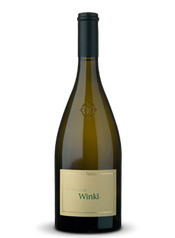Cantina Terlan, Alto Adige Terlano DOC, Sauvignon “Winkl,” 2016 (Banville Wine Merchants, $16): Over the past decade Italy’s Alto Adige wine region has developed a name for itself among many wine professionals for both the quality of its wines and their impressive value. Situated in northernmost Italy between Switzerland and Austria, Alto Adige is surrounded by the Dolomite Alps. The Alps protect against cold influences from the north and the Atlantic, while the region’s central valleys open to the south and the Mediterranean, providing a climate that is warm for the latitude. Vineyards cover an enormous range of altitudes.  The sun shines typically 300 days per year, rainfall is low, and cool nights balance the warm days, for a long growing season. Particularly at higher altitudes, conditions are ideal for fresh, flavorful white wines.
The sun shines typically 300 days per year, rainfall is low, and cool nights balance the warm days, for a long growing season. Particularly at higher altitudes, conditions are ideal for fresh, flavorful white wines.
Historically, Alto Adige produced more red wines than white, but now white wines account for 60 percent of the region’s production. Not surprisingly considering the wine’s popularity, Pinot Grigio is the leading white grape, followed by Gewurztraminer, Chardonnay and Pinot Blanc — producing, incidentally, probably the world’s finest Pinot Blanc wines. Only then does Sauvignon Blanc enter the picture, with only 970 acres of production, just seven percent of the region’s total. But the Terlano zone, where this wine originates, is considered one of the favored districts in the entire region for growing Sauvignon Blanc.
Cantina Terlan is a co-operative of grapegrowers, a commercial structure that is common in Alto Adige. Terlan has a reputation as one of the finest co-ops in Alto Adige, and one of the region’s top wineries of any sort. Some of its wines have a reputation for aging an unimaginable number of years. When I visited the winery nine years ago, I tasted a 1956 Terlano Classico — a probable blend of Pinot Blanc with 30 percent Chardonnay and 10 percent Sauvignon Blanc — at 52 years old, full of fascinating tertiary honey, mushroom and coffee notes and still vital.
The year 1956 happened to be the first year that Cantina Terlan produced its Winkl Sauvignon. (In Italy, the word “Blanc” is commonly omitted from the grape’s name.) The wine is made entirely from Sauvignon Blanc, grown in vineyards ranging from 820 to 1,542 feet in altitude on south-southwestern facing slopes, at yields of about three tons per acre. Winemaking for the 2016 wine involved whole-cluster pressing, a slow and cool fermentation in stainless steel, and lees aging in tanks, with no use of oak.
I am extremely impressed by this wine, even without considering its highly affordable price. It is rich but fresh, it is complex in flavor, and it’s very well made.
The wine’s fresh, complex aroma suggests ripe apricot, orange, fresh herbs, elderberry and a delicate floral note. In your mouth the wine is medium-bodied verging toward full-bodied, with rich viscosity cut through by persistent, high acidity. The wine’s flavors are similar to its aromas, along with citrus zest and a suggestion of apricot skin. Technically, the wine is fully dry (1.6 grams/liter unfermented sugar), but its richness of texture and its ripeness of fruit flavors mimic sweetness — an impression that the crisp acidity quickly undermines. That acidity drives the flavors to an extremely long finish, which is one of the wine’s finest features.
This wine to me embodies an improbable combination of ripeness/ richness with depth, freshness, concentration and length — the qualities of warmth and sunshine on the one hand with the qualities of coolness and slow ripening on the other hand. In that sense, it is a true ambassador for Alto Adige.
91 Points
